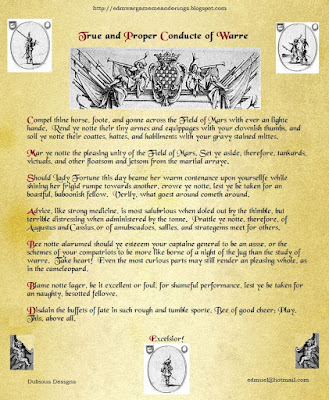In this post, dear readers, we meander into my Napoleonic collection--specifically, the Prussian army of the Befreiungskriege (1813-1814/15). Once again, I'll be telling the tale of another conversion (what a surprise, eh?).
One of the issues with the Prussian army of this timeframe, superficially, is that the only options for light cavalry seem to be Landwehr (plentiful) and hussars (high-octane). There is no middle ground, garden variety light cavalry option...unless, of course, you recognize that there were four regiments of "National" Cavalry that were raised and equipped by the Prussian states (The Ost Prussian, Pomeranian, Silesian, and Elbe, National Cavalry Regiments). Although not hussars, they certainly weren't militia. I represent them as equivalent to any other Chasseur or light dragoon regiment of any of the major combatant at that timeframe. The point is, this allows you to field a "normal" light cavalry contingent with your Prussians, something other than a hussar or a landwehr regiment, however you rate them. Unfortunately, two of these units (Ost Prussian and Pomeranian) had distinctive uniforms that are not represented well among the figures available. The good news, though, is that you can repurpose Prussian dragoons to represent them.

My Starting Point: Calpe Prussian Dragoons Acquired Painted via Ebay
As I was building up my Prussians, there happened to be a good number of ready-painted Prussian dragoons popping up on Ebay. I scored on these, and had enough to outfit my Prussian cavalry division with dragoons, with enough left over figures to re-paint as two of the National Cavalry regiments that wore a version of the dragoon litewka: the Ost Prussian and Pomeranian......
Before and After, Repainted as Ost Prussian National Cav (Left) and Pomeranian (Right)
So, I had a headstart with the horses and the headgear and faces. The conversion consisted of repainting the saddle furniture and the uniforms, and touching up a few of the other bits to make the overall look of the unit consistent.
OST PRUSSIANS
The Ost Prussian National Cavalry regiment had a dark blue litewka with hussar details: a very neat combination! This was my first crack at free-handing hussar details over a non hussar figure (a task that I would repeat later on with my 1848 Hungarian conversions). This unit was actually armed with the lance, so I overlooked that bit (so far, nobody has stumped away from the table in protest). During the reorganization of the Prussian army in 1815, three squadrons of this unit were used to form the Guard Hussars and the fourth squadron went to be the fourth squadron of the Fourth Uhlan regiment.
POMERANIANS
The Pomeranian National Cavalry Regiment had a green litewka with white polish cuffs and a very distinctive bright green girdle with red edging. To get the right effect for the girdle, I used an "old school" Testor's 1/4 oz green gloss enamel (later covered over with clear flat lacquer). In the 1815 reorganization, two squadrsons of the Pommeranian National Cavalry regiment went to form the Guard Dragoons and two squadrons went to the Fourth Uhlan Regiment.
SILESIAN AND ELBE (NOT PICTURED)
The Silesian and Elbe National Cavalry Regiments wore a standard hussar uniform, so a hussar figure could be repurposed for those, only in the appropriate color schemes. I might add those later, but personally, I found that the modified litewkas of the Ost Prussian and Pomeranian regiments are much more novel and interesting. That, plus when you put them on the table the French players, unless they are steeped deeply in Napoleonic Lore, don't know what to make of them--they kinda look like Landwehr, but they kinda look like dragoons, but they aren't either of them...
...and they certainly help to debunk the idea of the Prussian Army as dull.
Excelsior!






